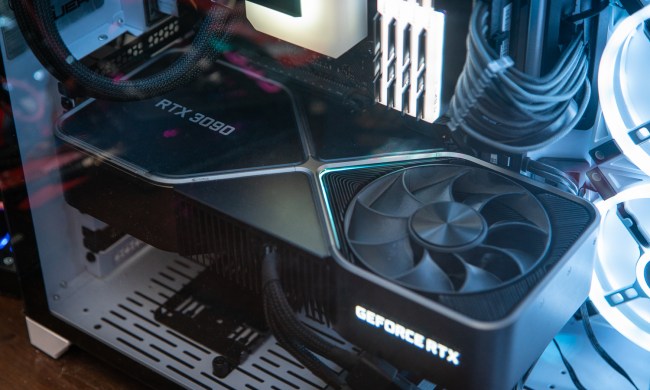If you’re in the market for one of Nvidia’s new GeForce RTX series graphics cards with ray tracing capabilities built in and want to know how the cards stack up against each other, then you may want to check out UL Benchmarks’ (formerly Futuremark) new Port Royal test. The tool will be part of UL’s 3DMark benchmarking suite and lets you measure ray tracing performance on gaming cards and will be widely available to 3DMark users on January 8.
“3DMark Port Royal is the world’s first dedicated, real-time ray tracing benchmark for gamers,” UL said. “You can use Port Royal to test and compare the real-time ray tracing performance of any graphics card that supports Microsoft DirectX ray tracing.”
UL will show off the full capabilities of the tool at CES in Las Vegas that same month, but it’s released a new trailer for the benchmark in all its reflective glory to whet the appetite of enthusiasts the world over. Since it’s a benchmark focused on ray tracing it’s no surprise to see its demo full of reflective surfaces sending light rays from various sources bouncing around the digital scene. The masked character that has been front and center in a variety of 3DMark tests, from Sky Diver to Time Spy, once again makes an appearance, this time facing off against newly revived androids which give us serious Alien: Isolation vibes.
Port Royal utilizes Microsoft’s DirectX ray tracing in order to deliver realistic details of shadows, reflections, and other visual effects in video games that would be difficult to achieve when performed with traditional rendering methods. UL claims that the tool was developed with input from leading technology companies, including AMD, Intel, and Nvidia.
Notably, though, UL does highlight that the benchmark only runs at up to 1,440P at “reasonable frame rates,” lending further credence to the idea that even Nvidia’s new monster Turing RTX graphics cards can’t run at 4K resolution with ray tracing enabled.
With a confirmed release date of January 8, the benchmark will be a premium feature. It will be purchasable as part of the 3DMark Advanced Edition which costs $30 in its entirety, or existing 3DMark users can tack Port Royal on to their suite of tools for just $3. Prospective buyers will be able to download the update on Steam or from UL’s own website.
Nvidia made a big bet on ray tracing when it debuted its GeForce RTX series. Because shadows, light, and reflections are rendered in real time, ray tracing makes scenes in games appear more cinematic. Nvidia’s RTX series became the first commercially available consumer graphics cards to support the capability. The flagship GeForce RTX 2080 Ti costs a whopping $1,199, but lower-end RTX cards, like the RTX 2070, start at $500.
To take advantage of ray tracing in a video game, developers must support the feature in their titles, and to date, only a limited number of titles have been announced that will support this technology. Unlike Nvidia, rival AMD is holding off on supporting ray tracing on its graphics card until the technology can be implemented on all of its GPUs, from entry-level to high-end devices.
Updated on December 10, 2018: Added launch date and pricing.


